The concept of offering free trials is not new; in fact, it has become a cornerstone for customer acquisition. Big brands like Slack, Dropbox, and Spotify employ this strategy to attract Free Trial to a Paying Customer and sell them on the value of their products.
However, the challenge lies not just in attracting users to try your SaaS product but also in converting those Free Trial to a Paying Customer. This is where the role of a customer success platform becomes paramount.
In this guide, we will delve into effective strategies that can help you optimize your free-to-paid user journey, boost conversion rates, maximize revenue, and ultimately drive sustainable growth for your SaaS business.
Definition and Importance of Customer Success
Customer success is a business strategy focused on ensuring that your customers achieve their desired outcomes while using your product. This entails fostering connections, providing timely assistance, and being proactive in addressing issues. A happy customer is more likely to keep using and even promoting your product.
Overview of Customer Success Platform
A customer success platform serves as a comprehensive solution to manage and enhance customer interactions throughout their lifecycle. It gives customer success teams the ability to monitor user behavior, provide individualized support, and direct clients toward reaping the benefits of your SaaS product.
Understand Your Free Users
a. Importance of Understanding Your Free Users
A crucial step in raising conversion rates is to gain an understanding of your Free Trial to a Paying Customer users. You can adjust your strategies to meet their unique needs by being aware of their pain points and usage patterns.
b. Analyzing User Behavior and Patterns
Leverage analytics to gain deeper insights into how free trial users interact with your product. Understand which features they engage with the most, where they encounter roadblocks, and what prompts them to explore further.
c. Identifying Potential Paying Customers
Through a data-driven approach, you identify users who show a higher likelihood of converting. These users are likely to be consistently engaging with key features or frequently seeking help from your customer support team. Such insights enable you to prioritize resources and strategies.
What Does “Free Trial Conversion Rate” Mean?
To evaluate the success of your conversion strategies, it is essential to understand your free trial conversion rate. This is the proportion of people who sign up for a free trial and later buy a product. Monitoring this metric helps you find areas for improvement and gain useful insights into how effectively your user experience works.
Why is it Important to Track Your Free Trial Conversion Rate?
- Tracking your Free Trial Conversion Rate helps you measure the success of your conversion efforts, identify bottlenecks, and refine your strategies accordingly. It allows you to make informed decisions based on data rather than relying on assumptions.
- By tracking the conversion rate, you can identify high-friction points where users are dropping off on the customer journey and make the necessary improvements on time.
- Tracking your trial conversion rate also helps with resource allocation, as you know the necessary points to intensify your efforts
How to Calculate Your Free Trial Conversion Rate
Calculating your Free Trial Conversion Rate is quite straightforward. You simply divide the number of users who converted into paying customers by the total number of free trial users and multiply by 100.
Conversion Rate=Number of Trial StartsNumber of conversions ×100
For example, let’s say you had 500 users start the free trial, and out of those, 100 converted to paying customers during the same period.
Conversion Rate= 100500 ×100=20%
Here, your conversion rate would be 20%
4 Reasons Why Free Trial Users Typically Churn
Free trial users often churn due to various reasons:
- Lack of Understanding: Users might not fully grasp the value your product offers.
- Complex Onboarding: A complicated onboarding process can deter users from exploring your product.
- Unmet Expectations: If users expect specific outcomes that aren’t met, they’re more likely to churn.
- Lack of Engagement: Users who don’t engage with your product are less likely to convert.
Free Trial versus Freemium Model
Understanding the distinction between a free trial and a freemium model is crucial. A free trial offers full access to your product for a limited period, while a freemium model provides a basic version of your product for free, with premium features available for a fee.
Strategies to Convert Free Trial Users into Paying Customers
1. Optimize Your Trial User Journey for Conversions
Map out the user journey during the free trial period. Identify key customer touchpoints where users should experience the true extent of your product and quickly sell them on its value. For instance, during onboarding, you tell users everything they get when they purchase your product.
GetResponse includes this information in their signup page so users know what they’re getting early-on. Plus, they also include their unique selling point to convince users why they’re the best on the market.
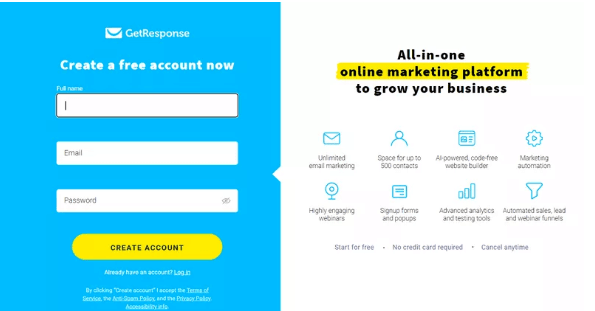
2. Communicate Expectations Clearly Throughout the Trial Period
Ensure that your users know what to expect during and after the trial. Communicate the benefits of upgrading to a paid plan, highlighting unique features and value propositions. This way, there’ll be no surprises once they upgrade to a paid plan.
Here’s an example from Shopify.

3. Help Users Achieve Success with In-App Guidance
In-app guidance is a powerful tool that can significantly impact your SaaS free trial conversion rate. By offering contextual assistance and information within your product’s interface, you can subtly guide users toward successfully interacting with your product features without interruptions.
In-app guides come in many forms, including product tours, interactive walkthroughs, resource centers, and native tooltips. Here’s an example of how Slack uses tooltips during their onboarding to introduce their features to new users.
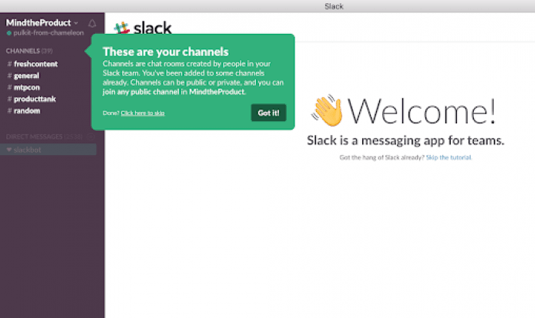
4. Drive Users Toward Key Actions with Onboarding Checklists
Onboarding checklists can be utilized as invaluable roadmaps, guiding users toward seamless and enjoyable experiences. These user-friendly checklists delineate vital tasks, milestones, and noteworthy features that warrant exploration.
These specialized checklists are designed with the singular goal of positioning users for success and helping them reach their “Aha moment” faster during their trial journey. An example of an onboarding checklist used in Evernote.
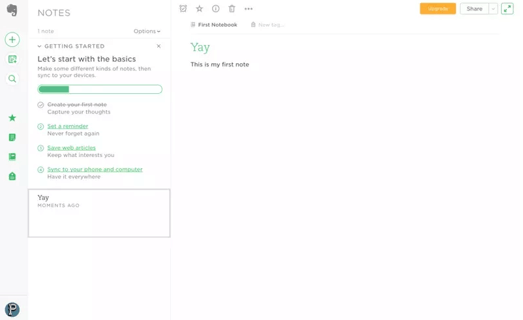
5. Create Engagement Loops to Keep Users Hooked
Engagement loops are designed to maintain users’ interest and involvement over time. By implementing gamification elements, personalized notifications, and exclusive content, you can create a cycle of engagement that encourages users to remain active.
To gain deeper insights into Churn360, we recommend setting up a demo with one of our experts for a detailed walkthrough
Book a demo
6. Personalize Communication for Every Stage of the Trial Period
Segment users based on their engagement levels and tailor communication accordingly. For instance, rather than showing an upgrade prompt randomly, you can show it when users interact with a premium feature. You can also send personalized emails with relevant content, tips, and success stories to nurture their journey. Here’s an example from Spotify.
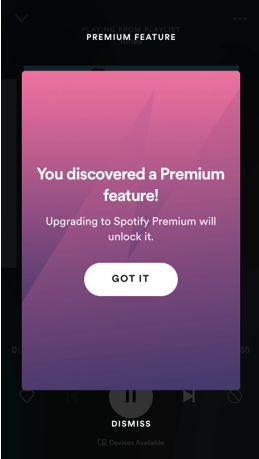
7. Encourage Users to Upgrade at the Right Time
Monitor user behavior to identify the optimal time to prompt users to upgrade. This could be when they are fully onboarded, when they’ve experienced a specific level of value, when they’re approaching the end of their trial period, or when they try to utilize premium features.
Here’s an example from Dropbox.
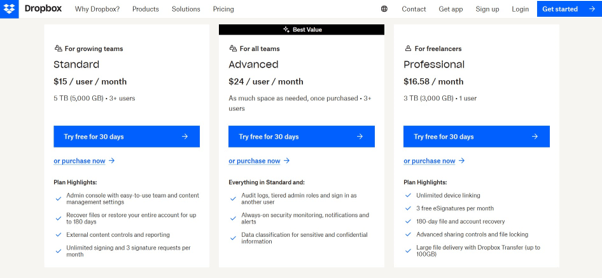
8. Re-engage Inactive Users with personalized Emails
For users who’ve gone inactive, send targeted emails to remind them of the benefits they enjoyed during the trial. Provide additional resources to reignite their interest. Keep them updated on the new features they might be interested in, discounts that apply to them, and ongoing promotions.

Conclusion
Converting Free Trial to a Paying Customer is vital for growth, but it can only be done right with the help of a customer success platform. You need to first understand your users and monitor their behavior before implementing any conversion strategies to maximize revenue and build loyalty.
But remember, conversion isn’t the end; ongoing customer success drives retention and long-term relationships. Leverage a customer success platform for sustained SaaS success.


